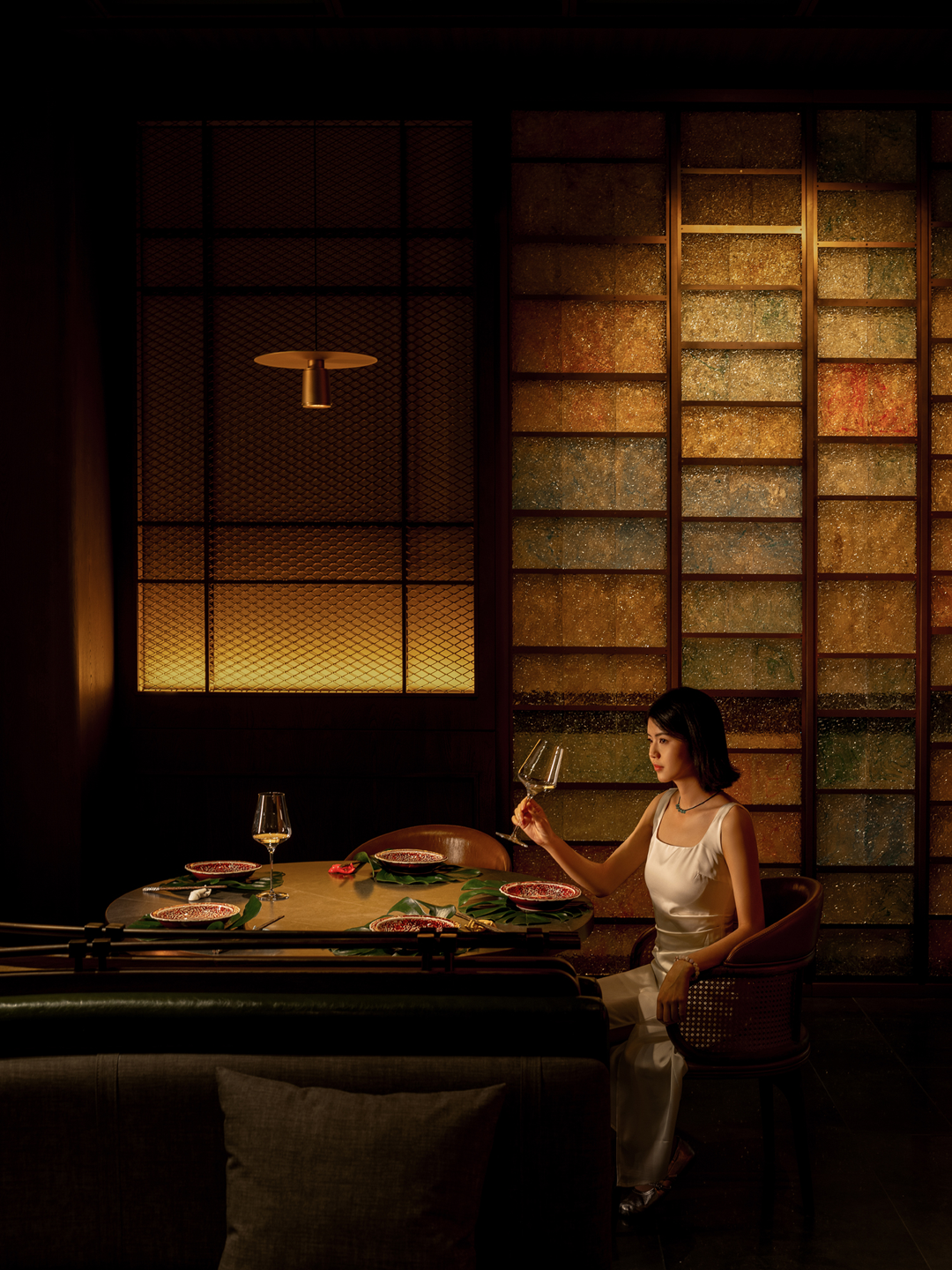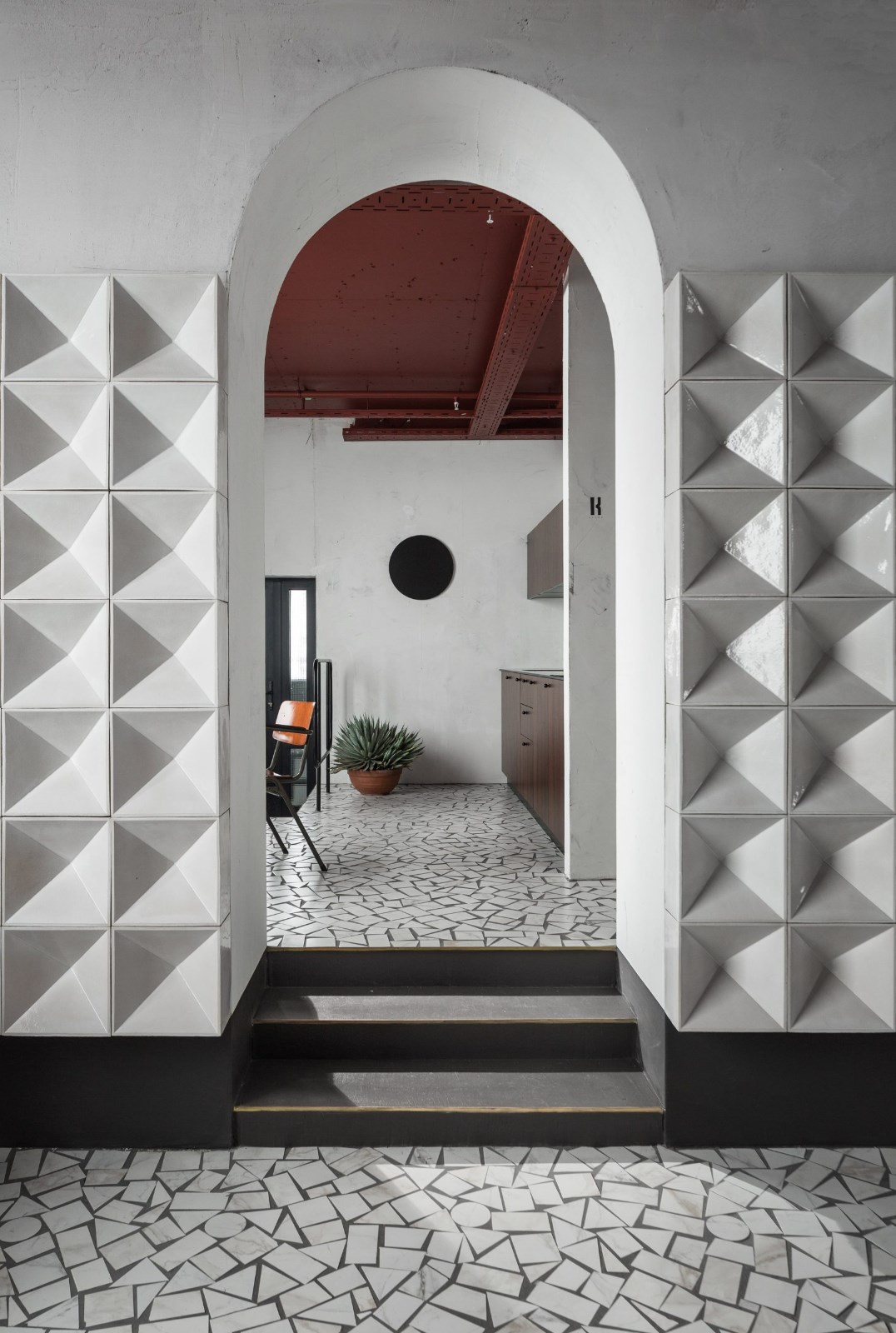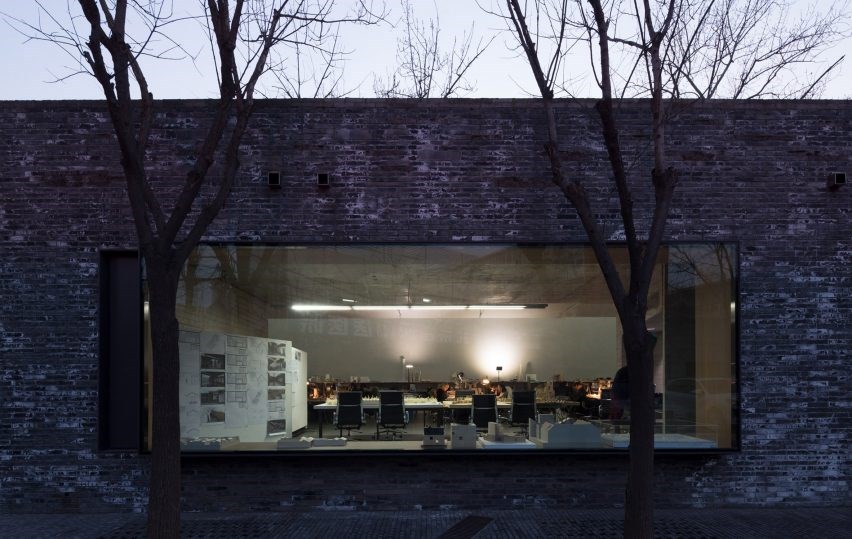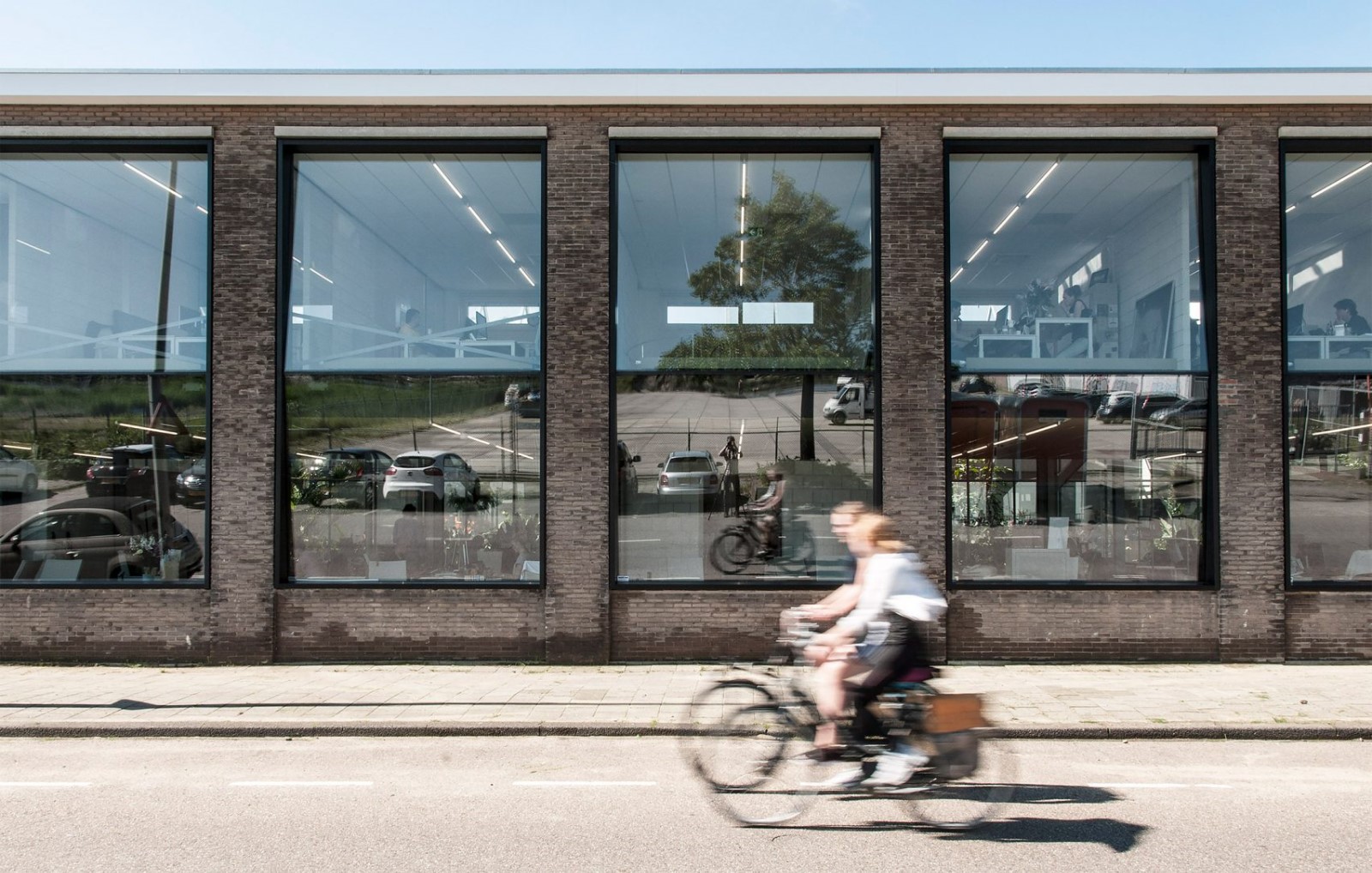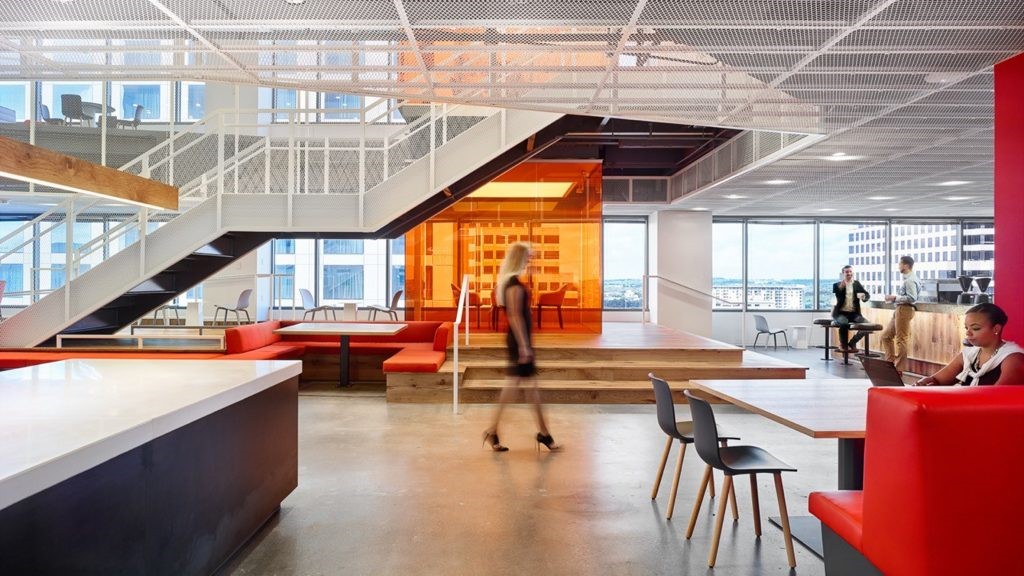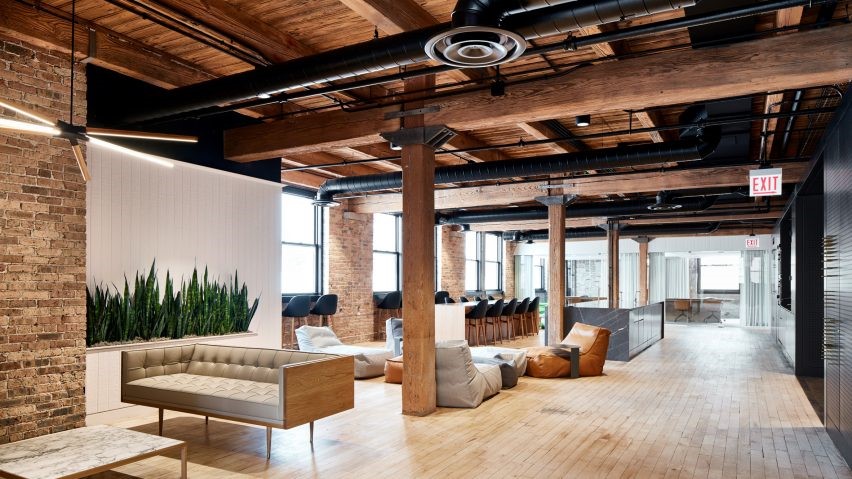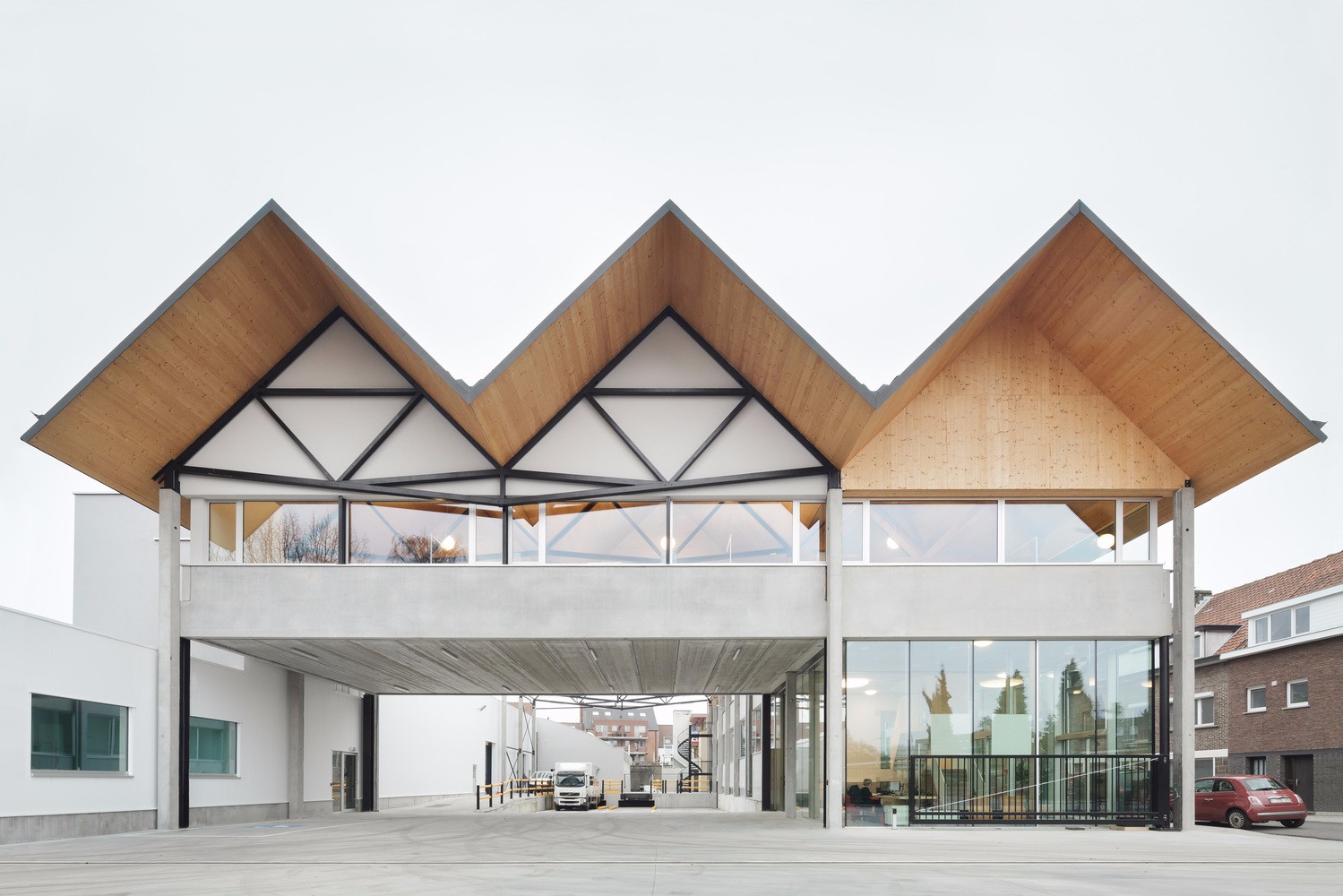柏林Bureau Borsche创新家具单元拼接的办公空间
2021-09-14 10:23
设计 \ Design:Gonzalez Haase AAS
摄影 \ Photography Credits:Courtesy Gonzalez Haase AAS; Gerhard Kellermann; Bureau Borsche
“ Gonzalez Haase AAS和Bureau Borsche有着多年的合作。当柏林建筑师开始规划慕尼黑办公室时,Borsche构思了Gonzalez Haase新网站的设计。 这是另一项合作的结果:设计师Stefan Diez和家具制造商Wagner Living正在基于Gonzalez Haase的Borsche原型设计开发一种灵活的家具系统。 Gonzalez Haase AAS and Bureau Borsche are associated with years of collaboration. While the Berlin-based architects got to planning the graphic designers Munich office, Borsche conceived the design of Gonzalez Haases new website. This yielded in another collaboration: the designer Stefan Diez and the furniture manufacturer Wagner Living, are now developing a flexible furniture system based on Gonzalez Haase’s prototypical design for Borsche. ”
Bureau Borsche新址位于一幢典型的慕尼黑住宅楼,底层是商业单元。2019年3月,Gonzalez Haase AAS对315平方米的办公空间进行了翻新和重新设计。建筑师在设计方面没有受到限制,Bureau Borsche的主要愿望是,他可以和团队一起在同一张桌子上工作,并有一个休息区。为了实现这一点,设计团队创建了三个不同功能的房间:最前面的是建筑的陈列室,后面的是办公室,还有一个位于地下室的档案室,成为连接陈列室和办公室的通道。
The new Bureau Borsche is located in a quintessential Munich residential building with commercial units on the ground floor. In March 2019, Gonzalez Haase AAS took on the renovation, refurbishment and spatial redesign of the 315 sqm office space. The architects were given no limits in terms of design. Borsches primary desire was that he would be able to work together with his team at one common table and have a lounge area to retreat to. To achieve this, three rooms of various functions were created: a showroom in the front-facing building, a workspace in the rear building, and archives in the basement, connecting the showroom and workspace.
通过连贯的设计语言和轻质材料的应用,Gonzalez Haase能够赋予空间新的结构,将家具变成建筑本身不可分割的一部分。引导主题是由铝蜂窝板(种用于飞机建造的工业材料)其开口边缘和连接处由抛光的固态铝制成。这样,由这些面板制成的高架搁板将空间划分为工作区域和功能区域。根据其功能,它的正面或背面都覆盖有半透明的聚碳酸酯面板:一侧可容纳后台办公室,小厨房,电话亭,存储区和休息室。可以根据需要打开和关闭金属条形窗帘,以在视觉上将休息室与工作区分开。9米长的桌子为团队提供了一个在工作场所中心的协作空间。它由一块11.5毫米薄的铝蜂窝板组成,上面覆盖着灰色的天然橡胶。整体桌子和搁架单元的饰面定义了房间的灰色和白色,与团队的日常图形工作形成了鲜明的对比。
Through a coherent design language and the application of lightweight materials, Gonzalez Haase was able to give the space new structure, turning the furniture into an integral part of the architecture itself. The guiding theme is formed by aluminium honeycomb panels – an industrial material used in aircraft construction – with open edges and junctions made of polished solid aluminium. This way, a room-high shelf made of these panels divides the space into work and functional areas. It is covered with translucent polycarbonate panels either on the front or back,based on its function: One side accommodates the back office, kitchenette, telephone booth, storage areas and the lounge. A metallic strip curtain can be opened and closed as needed to visually separate the lounge from the work area. The 9-meter-long table offers the team a collaborative space at the centre of the workplace. It consists of an 11.5 mm thin aluminium honeycomb panel, covered with grey natural rubber. The finishes of the monolithic table and shelving units define the austere grey and white colour spectrum of the rooms, in strong contrast to the teams daily graphic work.
老建筑的元素,例如铸铁支架,钢梁和砖墙,都涂有光滑的纸莎草纸白色。遍布货架和整个房间的LED灯带营造出流畅的空间感。水磨石风格的混凝土地板让人想起附近的1970年代地铁站Sendlinger Tor。
Elements of the old building such as the cast-iron supports, steel beams and brick wall were painted in glossy papyrus white. The LED lighting strips that run across the shelves and throughout the entire room create a flowing feeling of space. The concrete floor in terrazzo style is reminiscent of the nearby subway station Sendlinger Tor from the 1970s.
陈列室同时用作展览空间,实验室和操作间。优雅的街道窗户向过往行人展示了Bureau Borsche的工作环境。天花板上覆盖着耐火泡沫,使横梁产生出乎意料的柔软氛围,与家具的硬质表面形成鲜明对比。在这里,水磨石地板作为墙板继续。通往地下档案室的小厨房和开放式网格楼梯位于金属条形窗帘的后面。
The showroom serves simultaneously as an exhibition space, laboratory and workshop. The elegant street window gives passers-by an impression of the working world of Bureau Borsche. The ceiling is covered with fire-resistant foam, creating an unexpectedly soft aura of the beams that contrasts with the hard surfaces of the furniture. Here, the terrazzo floor slabs continue as wall panelling. A kitchenette and an open grid staircase leading to the archive rooms in the basement are located behind a metallic strip curtain.
在设计过程中,Borre Borsche的家具成为办公家具系统的原型:基于Gonzalez Haase的设计,建筑师与Stefan Diez和Wagner Living一起将架子,桌子和隔板开发成一个参数化系统。通过中央连接元件,可以在不使用工具的情况下随时轻松组装和扩展系统。新的家具系统具有模块化和最大灵活性的特点。
During the design process, the furniture for Bureau Borsche became the prototype for an office furnishing system: based on the designs by Gonzalez Haase, the architects together with Stefan Diez and Wagner Living, are developing shelves, tables and partitions into a parametric system. With a central joining element, the system can be easily assembled and expanded at any time without the use of tools. The new furniture system is characterized by modularity and a maximum of flexibility.
Project:Bureau Borsche Office
Design:Gonzalez Haase AAS
Photos:Courtesy Gonzalez Haase AAS; Gerhard Kellermann; Bureau Borsche
AAS由Pierre Jorge Gonzalez和Judith Haase于1999年创立,是一家位于柏林的工作室,主要从事建筑,场景设计和照明业务。
与理查德·格鲁克曼(Richard Gluckman)和罗伯特·威尔逊(Robert Wilson)在纽约水磨坊中心的早期合作成为当代艺术家,策展人和收藏家的众多备受推崇的项目中的第一个。
AAS始终将灯光与建筑之间的相互作用放在首位,因此其空间概念赢得了声誉。
他们的工作包括大型艺术品装置,豪华零售内饰,住宅扩展以及工业和艺术相关空间的转换。
AAS Founded by Pierre Jorge Gonzalez and Judith Haase in 1999, AAS Gonzalez Haase is a Berlin-based studio with principal practices in architecture, scenography and lighting. Early work with Richard Gluckman and Robert Wilson for the Watermill Center in New York became the first of many highly regarded projects with contemporary artists, curators and collectors. Keeping the interplay between light and architecture at the forefront of their designs, AAS have gained a noted reputatio
n for their spatial concepts. Their work includes major artwork installations, luxury retail interiors, residential extensions, and conversions for industrial and art-related spaces.
采集分享
 举报
举报
别默默的看了,快登录帮我评论一下吧!:)
注册
登录
更多评论
相关文章
-

描边风设计中,最容易犯的8种问题分析
2018年走过了四分之一,LOGO设计趋势也清晰了LOGO设计
-

描边风设计中,最容易犯的8种问题分析
2018年走过了四分之一,LOGO设计趋势也清晰了LOGO设计
-

描边风设计中,最容易犯的8种问题分析
2018年走过了四分之一,LOGO设计趋势也清晰了LOGO设计

















































